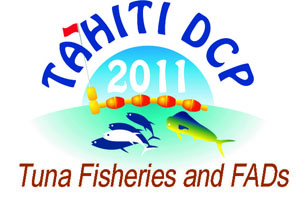Economic Benefits of Fish Aggregating Devices in the South Pacific
1 : Secretariat of the Pacific Community
(SPC)
* : Corresponding author
B.P. D.5. 98848 Noumea Cedex New Caledonia -
Nouvelle-Calédonie
Fish Aggregating Devices (FADs) have been widely adopted by Pacific Islands and Territories (PICTs) as a means to improve fishery production. Significant government capital and human resource has been assigned to the fabrication, deployment and maintenance of FADs, and most importantly, significant effort has been dedicated to fishing around FADs as they are thought to provide an array of benefits to the fishing community. Some of the direct and indirect benefits of FADs are thought to be: - Increased fishery production; - Reduced pressure on reef resources; - Import substitution; - Export creation; - Driving demand for sports fishing tourism; - Commercial and cottage industry development; - Increased employment; - Reduced fuel consumption; - Safety at sea; and - FADs maintain fishing interest. These benefits have been widely adopted in the Pacific, which is apparent by the numerous FAD programs that are underway, however little work has been done to quantify the economic benefits (or cost) of FAD programmes. This is primarily attributed to the lack of available data to complete cost-benefit studies. A recent study of catch and socioeconomic data in Niue determined that FADs double catch per unit of effort (kg/hr) and reduce fuel consumption by 0.5 litres per unit of effort (L/hr). At the average annual level of fishing effort, this translates to a net financial benefit of NZ $70,614 to the fishing community, and an economic return on investment of NZ $134,658 (net present value) over a two year FAD programme lifecycle. This paper will present the results of the Niue case study and provide recommendation for the collection of catch and socioeconomic data that will facilitate further studies to justify ongoing investment in FAD programmes.

 PDF version
PDF version
